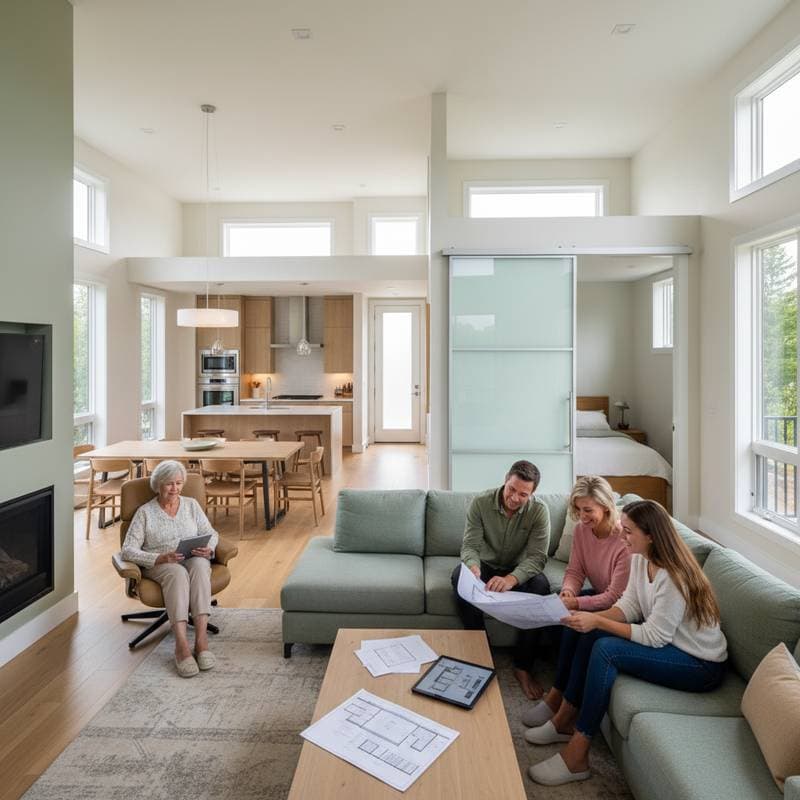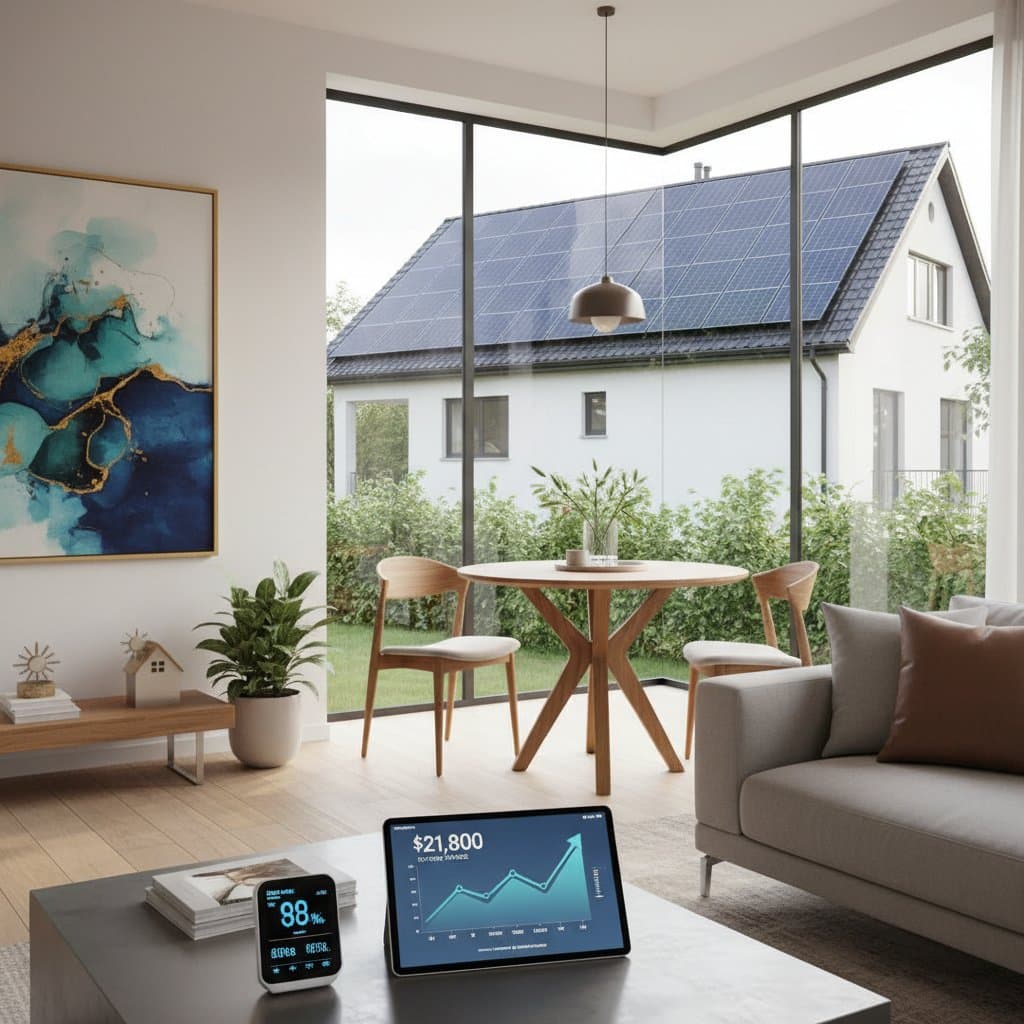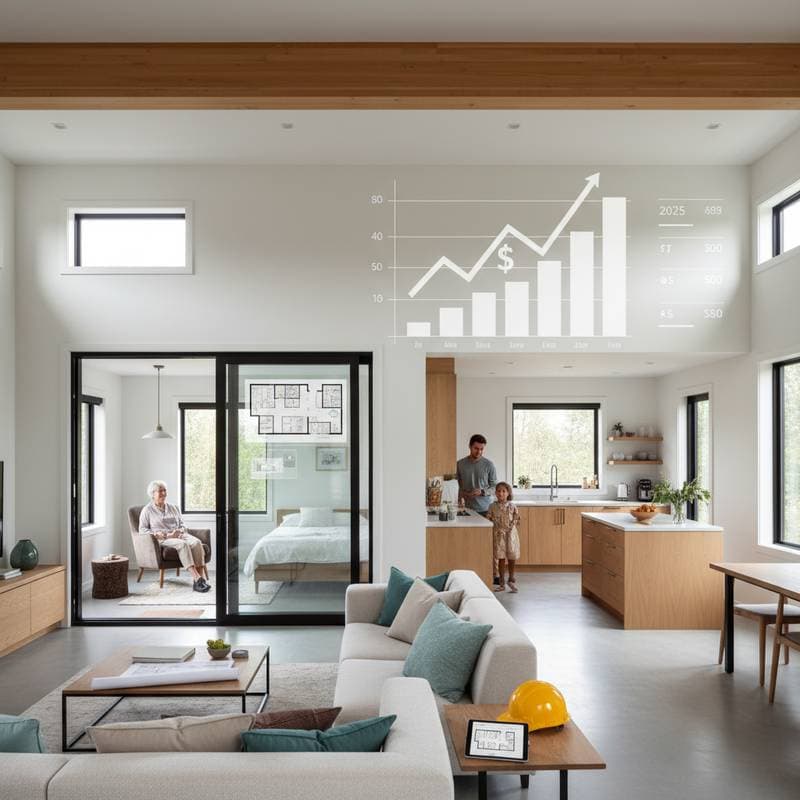The Rise of Garage Conversions as ADU Solutions
Accessory dwelling units, or ADUs, represent a growing response to housing demands in urban and suburban areas. Homeowners increasingly convert garages into these self-contained living spaces to accommodate family members, generate rental income, or address affordability challenges. This trend gains momentum as cities promote ADUs to increase housing stock without extensive new construction.
Garage conversions appeal due to their potential for relatively straightforward adaptation. Existing structures provide a foundation that reduces site preparation needs compared to ground-up builds. However, the financial landscape shifts in 2025, with costs influenced by broader economic and regulatory pressures.
Economic Pressures Impacting Material Expenses
Material costs form a significant portion of any garage conversion budget. In 2025, inflation affects key supplies like lumber, insulation, and roofing components. Prices for pressure-treated wood, essential for structural reinforcements, have increased by approximately 15 percent over the past year due to supply chain disruptions and heightened demand from residential projects.
Energy-efficient materials add further expense. Homeowners now select high-performance windows and doors to meet updated standards, which can double the cost of standard options. For instance, double-paned, low-emissivity glass units, while beneficial for long-term savings, raise initial outlays by $5,000 to $10,000 depending on the garage size.
Sustainable choices, such as recycled steel framing or bamboo flooring, align with environmental trends but command premium pricing. These selections not only comply with green building incentives but also appeal to eco-conscious buyers in the resale market.
Evolving Building Codes and Compliance Demands
Regulatory environments tighten in 2025, directly elevating conversion costs. Many jurisdictions adopt stricter seismic and fire safety requirements, necessitating reinforcements like shear walls or fire-rated drywall. Compliance with these codes often requires engineering assessments, adding $2,000 to $5,000 in professional fees.
Energy codes represent another major shift. The push toward net-zero standards mandates advanced insulation, solar-ready roofing, and efficient HVAC systems. Retrofitting a typical 400-square-foot garage might involve $15,000 in insulation and ventilation upgrades to achieve required R-values and air sealing.
Permitting processes grow more complex. Local governments introduce impact fees for utilities and infrastructure, ranging from $5,000 to $20,000 based on location. Homeowners must navigate zoning variances if the ADU exceeds size limits, which delays projects and incurs additional legal consultations.
Labor Shortages and Timeline Extensions
Skilled labor remains scarce in the construction sector, driving up hourly rates. Electricians, plumbers, and general contractors charge 20 to 30 percent more than in previous years, with average project timelines extending from three months to six or more. This delay stems from backlogs and competition for qualified workers experienced in ADU-specific adaptations.
Hiring specialized teams ensures quality but inflates budgets. For example, integrating plumbing for a full kitchen and bathroom demands licensed tradespeople, contributing $20,000 to $40,000 to the total. Delays also increase holding costs, such as temporary housing or lost rental opportunities.
Homeowners face choices in contractor selection. Vetting for certifications and references becomes essential to avoid subpar work that leads to costly rework. Platforms for licensed professionals help, though availability limits options in high-demand areas.
Strategic Planning for Cost Management
Effective planning mitigates rising expenses. Begin with a detailed site assessment to identify structural needs, such as foundation upgrades for added weight from living spaces. Engage an architect early to design within code parameters, potentially saving 10 to 15 percent through efficient layouts.
Budget allocation proves critical. Allocate 40 percent to materials, 30 percent to labor, 15 percent to permits and fees, and 15 percent as a contingency for unforeseen issues. Tools like cost-estimating software assist in forecasting, though professional quotes provide the most accuracy.
Financing options expand in 2025. Home equity loans or ADU-specific grants from local housing authorities cover portions of costs. Research incentives for energy-efficient features, which offer rebates that offset up to 20 percent of expenses.
- Conduct a preliminary walkthrough with a structural engineer to evaluate feasibility.
- Research local zoning laws and apply for pre-approvals to streamline permitting.
- Obtain multiple bids from vetted contractors to compare pricing and scopes.
- Prioritize phased construction if full funding proves challenging, starting with essentials like insulation and electrical.
- Document all decisions and changes to maintain compliance records.
Enhancing Property Value Through Thoughtful Conversions
Well-executed ADUs boost home equity significantly. In markets with high rental demand, a garage conversion yields returns of 10 to 15 percent annually through leasing. The addition increases usable square footage, appealing to buyers seeking multigenerational living options.
Long-term benefits extend to sustainability. Energy-efficient designs lower utility bills by 30 percent, providing ongoing savings. Compliance with current codes future-proofs the property against future regulatory changes.
Homeowners realize the most value by aligning the ADU with personal or market needs. Custom features like accessible entries for aging in place or smart home integrations enhance appeal. Ultimately, strategic investments in garage conversions position properties for enduring financial and lifestyle advantages.



